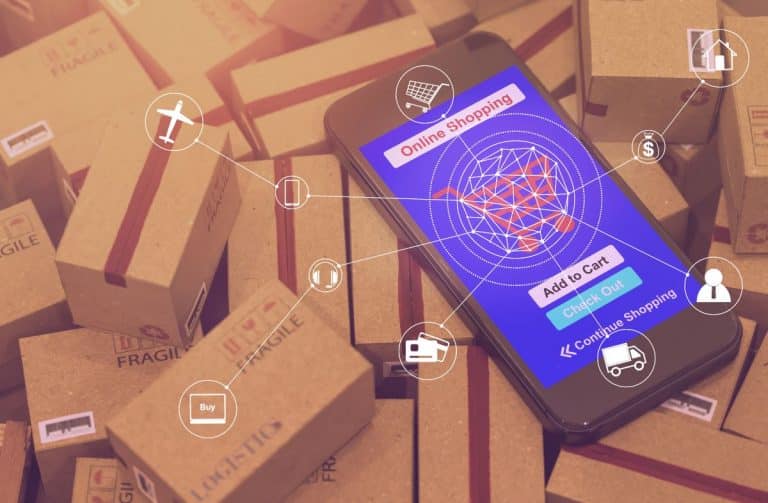In the fast-paced world of retail, staying ahead of the competition and understanding customer behavior is critical to maximizing market share. With the rise of technology and the ever-evolving consumer landscape, the concept of omnichannel retail has become increasingly significant. Omnichannel retail is more than just a buzzword; it’s a strategic approach that seamlessly integrates multiple sales and marketing channels to provide customers with a consistent and holistic shopping experience. To thrive in this environment, retailers must not only offer products through various channels but also analyze and track customer behavior across these channels. In this blog post, we’ll explore the significance of cross-channel tracking in omnichannel retail and how it can help businesses understand customer behavior and ultimately increase their market share.
Understanding Omnichannel Retail
Omnichannel retail is a holistic approach to retailing that aims to provide customers a seamless and integrated shopping experience across various channels. These channels can include physical stores, e-commerce websites, mobile apps, social media platforms, and more. The primary goal of omnichannel retail is to break down the barriers between different channels, allowing customers to interact with a brand and make purchases in the way that is most convenient for them.
The rise of omnichannel retail is closely tied to changing consumer behavior and expectations. Customers now expect a consistent and personalized experience, regardless of the channel they choose. They may research a product online, visit a physical store to see it in person, and make the actual purchase through a mobile app. This fluidity between channels has necessitated the need for retailers to track customer interactions and behavior across them.
The Evolution of Retail
It’s crucial to recognize how the retail landscape has evolved over the years to understand the importance of cross-channel tracking in omnichannel retail. Traditional retail was predominantly brick-and-mortar, with limited channels for customer interaction. The introduction of e-commerce disrupted this model and gave rise to multichannel retail, where businesses operated both physical stores and online platforms.
Omnichannel retail takes this a step further by integrating various channels and ensuring a consistent experience throughout the customer journey. Customers can now seamlessly switch between channels during their shopping process, and this shift has profound implications for retailers. It requires a deep understanding of customer behavior and preferences to provide the desired experience.
The Role of Cross-Channel Tracking
What is Cross-Channel Tracking?
Cross-channel tracking, often referred to as cross-channel analytics, collects and analyzes data on customer interactions and behaviors across different retail channels. It involves monitoring and recording customer touchpoints, such as website visits, social media engagement, mobile app interactions, in-store visits, and customer service inquiries, to comprehensively view each customer’s journey.
By implementing cross-channel tracking, retailers can gain insights into how customers move between various touchpoints and make purchasing decisions. This data is invaluable for understanding the customer’s path to purchase, identifying pain points in the shopping process, and making data-driven decisions to enhance the customer experience.
Benefits of Cross-Channel Tracking
Cross-channel tracking offers several benefits for retailers:
1. Customer Insights: It provides a deep understanding of customer behavior, preferences, and the channels they prefer. Retailers can use this data to tailor their marketing and sales strategies to meet customer expectations.
2. Improved Customer Experience: By tracking customer behavior, retailers can identify pain points in the customer journey and make necessary improvements. This leads to a smoother and more enjoyable shopping experience.
3. Targeted Marketing: Retailers can use cross-channel data to create personalized marketing campaigns. Customers are more likely to convert When they receive targeted offers and recommendations.
4. Enhanced Inventory Management: With a holistic view of customer demand, retailers can optimize their inventory management, ensuring that products are available when and where customers want them.
5. Competitive Advantage: Retailers that effectively use cross-channel tracking gain a competitive edge by responding quickly to changing market dynamics and customer needs.
The Power of Customer Behavior Insights
Customer Behavior in Omnichannel Retail
Customer behavior in omnichannel retail is a complex web of interactions, preferences, and decision-making. Customers no longer follow linear purchase paths; they may start their journey on a smartphone, continue on a laptop, visit a physical store to see the product, and finalize the purchase online.
Understanding this behavior requires a holistic approach. Cross-channel tracking allows retailers to monitor touchpoints and analyze how different channels influence customer decisions. For example, a customer might research a product on social media, read reviews on a website, visit a physical store to examine the item, and then make a purchase through a mobile app. Each of these touchpoints contributes to the customer’s overall experience.
Data-Driven Decision Making
In the world of retail, data is king. Retailers need to move beyond mere assumptions and intuitions when making strategic decisions. Cross-channel tracking provides the data required to make informed choices regarding product offerings, marketing strategies, inventory management, and more.
By analyzing customer behavior data, retailers can answer crucial questions, such as:
- What are the most effective marketing channels for reaching our target audience?
- How do customers switch between channels during the shopping journey?
- What products or product categories are frequently viewed but not purchased?
- Are there any geographic or demographic patterns in customer behavior?
The insights gained from cross-channel tracking enable retailers to allocate resources efficiently and tailor their offerings to meet customer demands.
Tools and Technologies for Cross-Channel Tracking
Data Analytics and Customer Relationship Management (CRM)
Data analytics and Customer Relationship Management (CRM) systems are fundamental tools for cross-channel tracking. Data analytics software can process vast amounts of data from different channels, providing insights into customer behavior. CRM systems help manage customer information, interactions, and preferences, ensuring that the customer experience remains consistent and personalized across channels.
Artificial Intelligence and Machine Learning
Artificial Intelligence (AI) and Machine Learning (ML) play a vital role in cross-channel tracking. These technologies can analyze data at a granular level, identifying patterns and trends that might be missed by manual analysis. AI-powered recommendation engines, for example, can suggest products based on a customer’s previous interactions and purchases.
Customer Data Platforms (CDPs)
Customer Data Platforms (CDPs) are specialized tools designed to consolidate customer data from various channels into a single, unified profile. They provide a 360-degree view of the customer, making it easier for retailers to understand behavior and preferences. CDPs enable real-time data integration, ensuring that customer profiles are always up to date.
Challenges and Ethical Considerations
Privacy Concerns
While cross-channel tracking provides numerous benefits, it also raises privacy concerns. Customers may be wary of their data being collected and shared across different platforms. Retailers must be transparent about their data practices and ensure they comply with data protection regulations such as GDPR or CCPA.
Data Security
Collecting and storing vast amounts of customer data require robust data security measures. Retailers must protect customer information from data breaches and cyberattacks. A data breach jeopardizes customer trust and can lead to severe legal and financial consequences.
Best Practices for Successful Cross-Channel Tracking
Integration and Consistency
Integration is key to successful cross-channel tracking. Retailers should aim for a seamless experience with consistent customer data across all channels. When customers switch from one channel to another, they should feel like they are dealing with the same brand.
Personalization and Targeted Marketing
Personalization is a significant driver of customer engagement. Retailers should use cross-channel tracking data to personalize marketing messages, product recommendations, and promotions for individual customers.
Data Governance and Compliance
To address privacy concerns and data security, retailers must establish robust data governance policies and comply with relevant regulations. Transparent data practices and a commitment to customer data protection can enhance trust.
The Future of Cross-Channel Tracking in Retail
As technology continues to advance, the future of cross-channel tracking in retail holds several exciting possibilities. Predictive analytics, real-time tracking, and the integration of augmented reality (AR) and virtual reality (VR) experiences are all on the horizon. The retail landscape will continue to evolve, and retailers that embrace these changes will have a competitive edge.
Conclusion
Omnichannel retail is no longer a choice but a necessity for retailers looking to thrive in a digital world. Cross-channel tracking is at the heart of omnichannel success. It enables retailers to gain valuable insights into customer behavior, offer a seamless shopping experience, and maximize market share. While challenges like privacy concerns and data security must be addressed, the benefits of cross-channel tracking are undeniable. The future of retail belongs to those who can successfully navigate the complexities of the omnichannel world, harness the power of data, and provide customers with the exceptional experience they demand. With the right strategies and technologies, retailers can unlock their full potential and shape the future of retail.




